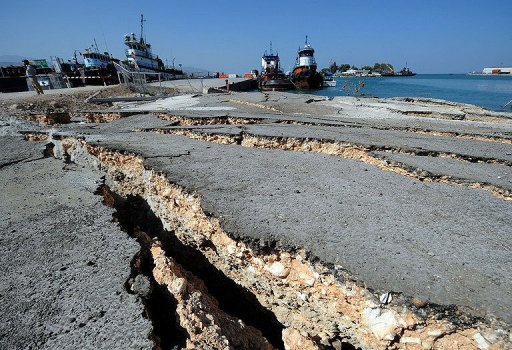
Artificial Intelligence May Have Solution To Predict Earthquake Aftershocks
According to scientists, artificial intelligence may have the solution to forecast where aftershocks may hit after an earthquake and the technology is expected to make it very easy.

The destruction brought by aftershocks are much when compared to its earthquake and the new technology can be predicted, experts hope.
But there are some methods that are being used by the seismologists to forecast when aftershocks will hit and let us know how strong they might be, but there is more uncertainty about how to be able to predict where they will strike.

A group of researchers trained a programme of “deep learning” with the hope to address that, with data about data of many earthquakes up to the numbers of tens of thousands along with aftershocks to see if they improve predictions.
“The previous baseline for aftershock forecasting has a precision of around three percent across the testing data set. Our neural network approach has a precision of around six percent,” said Phoebe DeVries, co-author of the study published in the journal Nature on Thursday.
“This approach is more accurate because it was developed without a strongly held prior belief about where aftershocks ought to occur,” DeVries, a post-doctoral fellow at Harvard, told AFP.
To do that, the researchers utilized a type of artificial intelligence called as deep learning the model of which somewhat the same as the human brain makes connections.
The special programme allowed the researchers to map relationships “between the characteristics of a large earthquake — the shape of the fault, how much did it slip, and how did it stress the earth — and where aftershocks occurred,” said Brendan Meade, professor of earth and planetary science at Harvard, and a study co-author.
The researchers conducted a test of the network by holding back a quarter of their data set and then fed the remaining information into the programme.
After the procedure, they then tested how well the programme successfully predicted the aftershock locations of the remaining 25 percent of cases that hadn’t been fed.
Out of the areas identified by the programme as high-risk, six percent did in fact experience aftershocks, which was up from the present three percent using existing methods.
After analysing the research, Gregory Beroza, a professor of geophysics at Stanford University, cautioned it “might be premature to infer… an improved physical understanding of aftershock triggering”.
Alongside the study, in another article published in Nature, he said that the research specifically had focused on only one set of changes caused by earthquakes but can also affect where aftershocks occur.
“Another reason for caution is that the authors’ analysis relies on factors that are fraught with uncertainty,” Beroza wrote.
DeVries acknowledged the fact that some more factors affect where aftershocks occur and that there is “much more to be done”.
“We definitely agree that this work is a motivating beginning, rather than an ending,” she said.
And according to Beroza, the research had helped in establishing a “beachhead” for more study into how artificial intelligence could prove to be helpful in forecasting.
“The application of machine-learning methods has the potential to extract meaning from these large and complex sources of information, but we are still in the early stages of this process.”
You May Also Read: Demonetization Move “Butchered” Economy Of India: BJP Ally – Shiv Sena